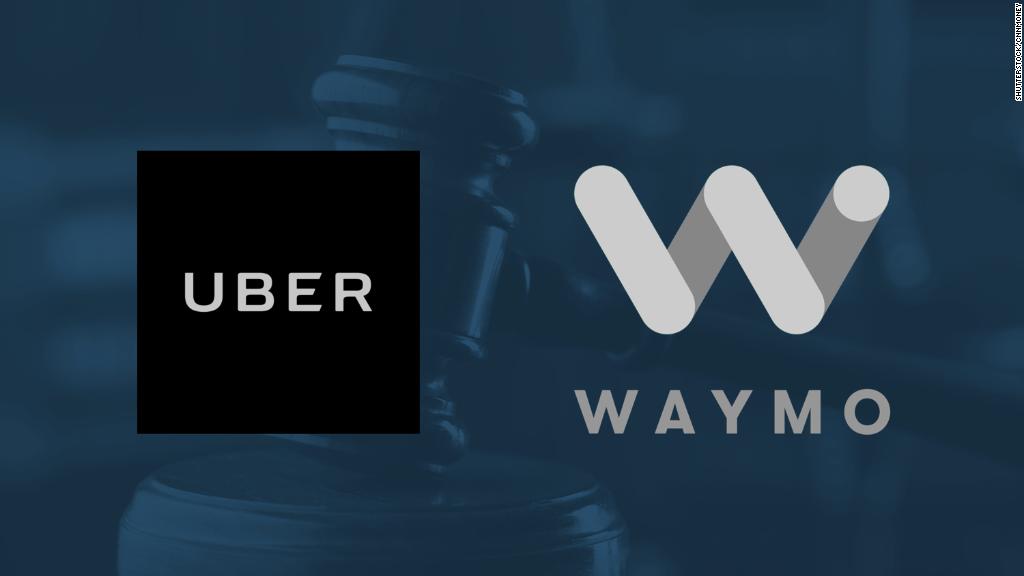Table Of Content

Waymo, for example, generally considered to be the leading autonomous vehicle operator in the world, only drove 628,838 miles, a 56-percent decrease compared to the 1.45 million miles it drove in 2019. That decrease is notable considering Waymo was recently approved to begin accepting passengers in its vehicles in preparation for the inevitable launch of a robotaxi service in California. Back in May, the CPUC had all but granted the expansion permits, then delayed the final vote twice amid mounting opposition from city agencies and residents. Since AVs hit the streets of San Francisco, there have been numerous instances of vehicles malfunctioning and stopping in the middle of the street — referred to as “bricking” — blocking the flow of traffic, public transit and emergency responders. As such, hitting a cone is a possible indicator the vehicle would hit something else it’s also trying to look for and avoid, such as a concrete bollard, which would cause great damage and be harder to see.

Despite mounting opposition, the Bay Area’s robotaxis keep racking up the miles
Companies have a lot of discretion about when to disengage, the testing environments aren’t uniform, and it’s difficult to make an apples-to-apples comparison between companies. Media outlets tend to overhype the numbers in service of a false “race” narrative in which certain companies are outpacing others in miles driven and disengagements. Waymo robotaxis reported 35 more crashes in San Francisco than Cruise since the beginning of 2022, according to publicly available reports from the California Department of Motor Vehicles.
Best Travel Insurance Companies

What's clear is that Waymo and Cruise are together showing the best progress. But don't forget that they have somewhat different business models. Cruise is all-in for shared, urban mobility, and Ammann has taken the bold step, for a former Detroit Big Three executive, of arguing that it's time to end the era of personal car ownership. For 2019, Waymo amassed 1.45 autonomous miles in California, with a disengagement about every 13,000 miles. Cruise drove fewer miles — more than 831,000, nearly doubling its 2018 total — and in the second half of 2019, Cruise recorded roughly one disengagement every 20,000 miles, as it increased the total miles it operated during the year.
Hitting an orange cone
And different companies are pursuing different self-driving systems with multiple business models. In 2018, Waymo announced deals to purchase "up to" 82,000 vehicles for use in its taxi fleet, suggesting the company thought it was on the verge of large-scale commercial launch. Meanwhile, several other players, including Cruise and Mobileye, say they're planning to launch large-scale commercial services by 2023. But plenty of self-driving companies have blown past self-imposed launch deadlines in the past, so it's not clear if that will actually happen. Waymo also started giving driverless rides to employees in Austin in March and plans to open up the service to members of the public later this year. Daniel Gregorski, 27, one of Cruise’s beta testers, told TechCrunch he was excited about the permit expansion.
Different business models
By Andrew J. Hawkins, transportation editor with 10+ years of experience who covers EVs, public transportation, and aviation. Cruise’s relative ubiquity throughout San Francisco means most riders can get a ride within 10 minutes. Waymo, by comparison, took 20 minutes to arrive at the Safeway on Taraval Street. "We are constantly evaluating and adjusting our dynamic routing to help riders safely and conveniently get where they’re going by balancing for road and traffic conditions," Waymo spokesperson Chris Bonelli said in a statement. Cruise is being run by CEO Dan Ammann, who used to be President of GM, alongside CTO and cofounder Kyle Vogt. The commission voted 3-1 in support of the expansions; Commissioner Genevieve Shiroma cast the sole “no” vote.
‘A waste of space’: Why this giant lot near Chase Center sits empty
We wanted to test the robotaxis' ability to drive through multiple types of terrains and ordered routes from a Safeway in the Sunset—where construction has closed off lanes along Taraval Street—to Alta Plaza Park up in Pacific Heights. Tesla also insists that its Autopilot semi-self-driving system could enable full autonomy in the future. And companies such as ArgoAI, with investment from Ford and the VW Group, and Mobileye, now part of Intel, are looking to carve out businesses in deliveries, consumer applications, data management, and regulatory strategy. If I'm wrong and Tesla's strategy does succeed, that would be very good news for Comma.ai, a self-driving startup founded by legendary hacker George Hotz.
Data shows Cruise and Waymo's sudden driverless taxi expansion in S.F. - San Francisco Chronicle
Data shows Cruise and Waymo's sudden driverless taxi expansion in S.F..
Posted: Fri, 10 Nov 2023 08:00:00 GMT [source]
Another robotaxi company wins (25 percent)
Waymo, a spinoff of Google, had announced details for its service in Los Angeles in January as it sought state regulatory approval and local support. Within the last year, Waymo has offered free "tour" rides in Los Angeles, and last month, it received regulatory approval to expand to a paid service, despite pushback from the Teamsters union and the Los Angeles Department of Transportation. Most of the city agencies that spoke during Monday’s meeting with the CPUC agree that AV technology has the potential to save lives, improve traffic and reduce greenhouse gas emissions — just not quite yet. Waymo had a slightly better go of it, but that could be because the company has fewer vehicles on San Francisco’s roads. From January 1 to June 30, Waymo recorded 58 retrieval events and said it averages 10 minutes to retrieve bricked vehicles. Waymo’s higher crash numbers may also be because its vehicles drive more miles than those of other robotaxi companies, a Waymo spokesperson said.
It's easy to bash tech, but I've started taking robotaxis — and they're awesome
He works as a nurse assistant at night and finds the experience of riding in an autonomous vehicle to be safer than riding in a taxi. The question is, which is harder — being able to reach the very high robotaxi safety performance level at all, or expanding the maps and service area? Waymo and Cruise have bet that making it work is the hard part, and scaling maps and certification is the easier part, while Tesla is working as though scaling maps will be too hard and expensive compared to making the driving system work. The state is a hub of tech activity with large concentrations of AV engineers located in and near the Bay Area, making it a natural place for development and testing. It gets tricky, however, once a company wants to deploy commercial operations in California, a state with some of the strictest autonomous vehicle regulation in the country. So if you take LA, for example, West Hollywood is a bit like the dense parts of San Francisco, but its paths to the suburbs are very much like Phoenix.
Deal of the week
In fact, it’s a slow, laborious, and politically fraught journey with an uncertain conclusion. The companies are convinced they can eventually win over skeptics and prove their vehicles are a relatively safe addition to the transportation infrastructure of any city. It’s not uncommon to see drivers trying to speed past cautious Cruise cars and slow-going Waymos; many will honk at AVs that stall on the roads, and one of our reporters narrowly avoided getting hit by an angry driver during a Cruise ride this week. In January, Cruise unveiled its Origin shuttle, a completely driverless vehicle on which it collaborated with GM and Honda. The Origin should follow a fleet of Cruise vehicles that will use autonomous Chevy Bolt EVs when the ride-hailing service launches. Waymo declined to comment on whether it plans to launch commercially in Atlanta, or any of the other cities in which it has started collecting mapping data.
Cruise reported 2,783 paid passenger rides in its fully driverless vehicles — quadrupling the number of rides from the previous quarter. The company’s ridehailing vehicles traversed a total of 26,838.61 miles during the quarter, which covered September to November 2022. The Standard wanted to know how these two Bay Area-based autonomous vehicle companies fared against each other in a ride from the city’s southern neighborhoods up to the tip of Pacific Heights. From car design to the feel of the ride to the names of the vehicles themselves, the two self-driving rides couldn’t be any more different. In the optimistic scenario, Waymo will maintain and expand its current lead. It will grow its current taxi service from one corner of the Phoenix metro area to all of Greater Phoenix, then steadily expand to other metro areas.
Its drivered vehicles did 6,313 trips, served 7,963 passengers, and traveled more than 410,700 miles, which includes its driverless pilot trips, as well as educational demo rides and rides given to Waymo employees and one or more guest. Employee-only trips are not reported as they don’t fall under CPUC jurisdiction. Both companies offer a paid ridehailing service in the Bay Area, with most of their activity concentrated in downtown San Francisco. But while Cruise is permitted to charge for rides in its fully driverless vehicles, Waymo only has authorization to charge for rides in vehicles with a safety driver behind the wheel. Cruise has faced scrutiny for its robotaxis malfunctioning on public roads, blocking the flow of traffic, public transit and first responders.
During those three months, the company only reported one collision. A Honda Accord made contact with the rear passenger side bumper of a Cruise AV while the robotaxi was trying to maneuver around a stopped semi truck. There was no passenger in the vehicle at the time, and there were no injuries reported.
In July, the company shut down its self-driving trucks program to shift all its available resources to ride-hailing. I have worked with pretty high-scale systems before Waymo, at Google and Ericsson, and this is a pretty staggering scale. But the only number I can tell you is 25,000-plus virtual vehicles driving continuously, 24/7, learning from each other, and [tens of] billions of miles in simulations. Think of how much you or I drive in a year – we drive, what, 10,000 miles in any given year…? Now think of billions of miles of experience – close to seven orders of magnitude difference.
The Los Angeles Department of Transportation said the Waymo expansion was happening too soon, without enough local oversight of autonomous vehicle operations, but in an order last month state officials said that those concerns were unfounded. Waymo said Tuesday that more than 50,000 people were on its waitlist to use the service. The company did not say how many users it would allow to fully use the app starting Wednesday. Last month, the company said it was starting with a Los Angeles fleet of fewer than 50 cars covering a 63-square-mile area from Santa Monica to downtown L.A.
The companies also shared data on instances in which someone from their team had to go and physically move a bricked AV, which they referred to as a “vehicle retrieval event” or VRE. With regulators, we have a very open dialogue and submitted more data than they ever asked for… So it has been a very positive engagement with them, but no change in tone. Companies must report everything from a minor fender bender—such as one that causes no damage to either car and normally would not be reported to the police—to incidents like deflating a tire in a pothole. Waymo recorded just two incidents in which injuries were reported in the same period. BrightDrop, GM’s commercial EV delivery business unit, plans to expand sales of its flagship electric vans to Mexico.


No comments:
Post a Comment